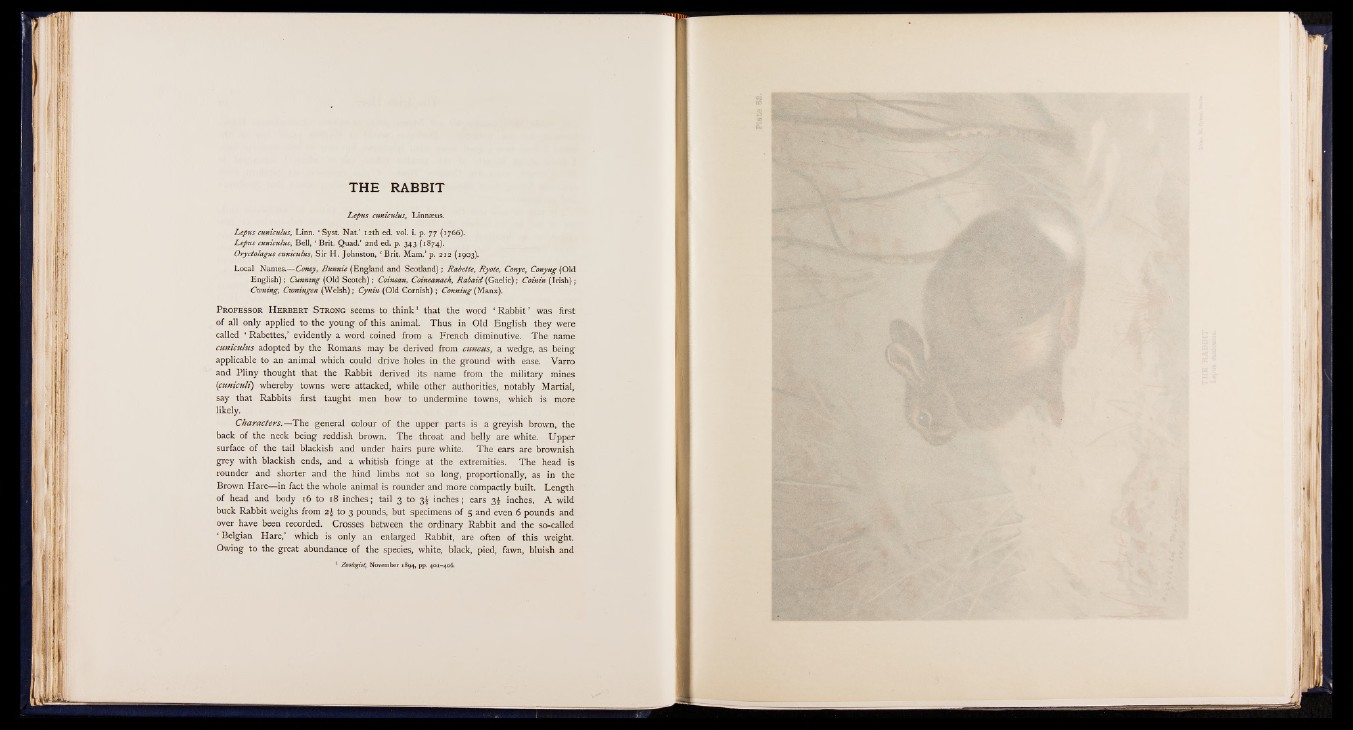
T H E RA B BIT
Lepus cuniculus, Linnaeus.
Lepus cuniculus, Linn. ‘ S y s t Nat.’ 12th ed. vol. i. p. 77 (1766).
Lepus cuniculus, Bell, ‘ Brit. Quad.’ 2nd ed. p. 343 (1874).
Oryctolagus cuniculus, Sir H . Johnston, ' Brit. Mam.’ p. 212 (1903).
Local Names.— Coney, Bunnie (England and Scotland); Rabette, Ryote, Conye, Conyng (Old
English); Cunning (Old Sco tch); Coinean, Coineanack, R abaid (Gaelic); Coinin (Irish);
Cuming, Cumingen (Welsh); Cynin (Old Cornish) ; Conning (Manx).
P r o f e s s o r H e r b e r t S t r o n g seems to think1 that the word ‘ Rabbit’ was first
of all only applied to the young of this animal. Thus in Old English they were
called ‘ Rabettes,’ evidently a word coined from a French diminutive. The name
cuniculus adopted by the Romans may be derived from cuneus, a wedge, as being
applicable to an animal which could drive holes in the ground with ease* Varro
and Pliny thought that the Rabbit derived its name from the military mines
(cuniculi) whereby towns were attacked, while other authorities, notably Martial,
say that Rabbits first taught men how to undermine towns, which is more
likely.
Characters.—The general colour of the upper parts is a greyish brown, the
back of the neck being reddish brown. The throat and belly are white. Upper
surface of the tail blackish and under hairs pure white. The ears are brownish
grey with blackish ends, and a whitish fringe at the extremities. The head is
rounder and shorter and the hind limbs not so long, proportionally, as in the
Brown Hare— in fact the whole animal is rounder and more compactly built. Length
of head and body 16 to 18 inches; tail 3 to 3^ inches; ears 3^ inches. A wild
buck Rabbit weighs from 2\ to 3 pounds, but specimens of 5 and even 6 pounds and
over have been recorded. Crosses between the ordinary Rabbit and the so-called
' Belgian Hare,’ which is only an enlarged Rabbit, are often of this weight.
Owing to the great abundance of the species, white, black, pied, fawn, bluish and
1 Zoologist, November 1894, pp. 401-406.